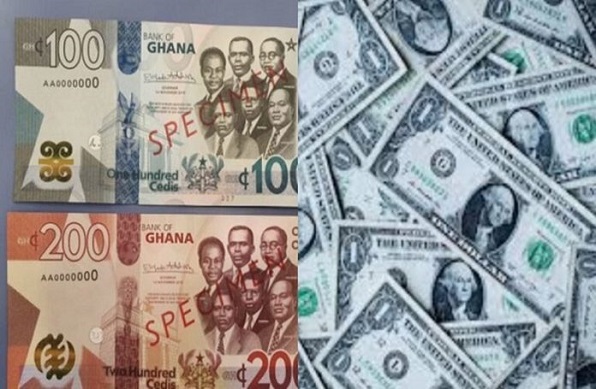Chief Operations Officer at Dalex Finance Joe Jackson has stated the likely reasons for the Cedi’s 13.95% (GHS 12.55 to GHS 10.80) remarkable appreciation rate against the Dollar in the last one month.
Analysing the reasons cedi’s performance against the dollar, Mr Jackson averred that, broadly, lower local demand for USD, USD depreciation against global currencies and investors no more moving Cedi funds to USD are the major reasons for the cedi’s sterling performance.
 The cedi is expected to continue its sterling performance against the dollar as Economic Analyst, Kweku Arkoh-Koomson, has projected a stable cedi in the near term following the successful completion of the external debt restructuring.
The cedi is expected to continue its sterling performance against the dollar as Economic Analyst, Kweku Arkoh-Koomson, has projected a stable cedi in the near term following the successful completion of the external debt restructuring.
The cedi gained 3.11% to the US dollar in the first week of April to narrow its year-to-date losses on the forex or retail market to about 17%.
“As we wait for an IMF deal this second quarter, we observe that government in the 2023 budget reiterated that the budget will be financed by non-concessional loans. Looking at how these non-concessional loans will also boost local reserves and improve FX liquidity, if nothing at all, the cedi will stabilise,” he said.
According to Mr. Arkoh-Koomson, the ongoing negotiations with external creditors has played a role in the cedi’s stability and could impact on the performance of the local currency going forward.
“We note that in the early stages of this process the cedi endured a depreciating run and that was mainly fueled by uncertainties or elevated sovereign risk. But over the past two months we have seen stability.”
“Meanwhile, over the past four weeks we’ve seen the cedi regaining strength and that’s market reaction mainly to the good news as government negotiates for the IMF deal”, he added.
The cedi is presently going for about GHS 10.93 to one US dollar in the retail market.
Source: Norvanreports





